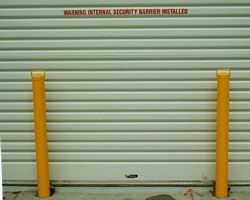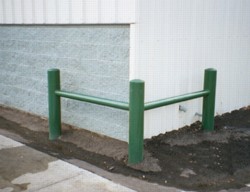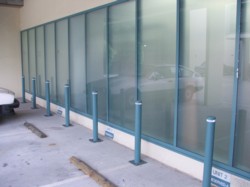Reasons for Bollards
- Securing premises (protect roller doors and glass window fronts)
- Road access restriction
- Controlled parking (prevent unauthorised parking and removal of parked cars)
- Excellent protection against vehicle impact
- Easy to use
- Designed to look smart for many years
- Flexible options
Ornamental Bollards offer a decorative alternative to pedestrian and traffic control. They can be used either as a way to connect a pathway or to detour traffic.
- Fixed with a base plate, during the concrete pour or concreted into the ground
- Can be removable
- With chain
- With support bar
- Can be concrete filled.
Standard Features for Removable Steel Bollards
- Reflective ring
- Hot dipped galvanised
- Powered coated safety yellow.
- Welded dome cap
- Lifting handle.
Options
- Sliding bar
- Chain linking can be added to discourage pedestrian access
- Colour matched to suit existing building.
There are two options for the installation process.
- Installation by core drilling into existing concrete. When using the core drill method simply use a core drill slightly larger than the removable pipe bollard insert.
- The installation of a new footing. When using a new footing set the removable pipe bollard inserts into the concrete as it is poured, or pre set the insert in desired locations.
Drainage is important and each installation will have different drainage scenarios. Insert length is typically 200mm (up to 600mm); dig your hole deeper that the insert to allow for drainage.
Maintenance Guidelines for Removable Bollards
- Generally, these bollards are low maintenance.
- If the bollard is used at least once per month then you will encounter few problems. Bollards that are left in the ground for months at a time can or will seize in place with dirt, rocks, etc.



